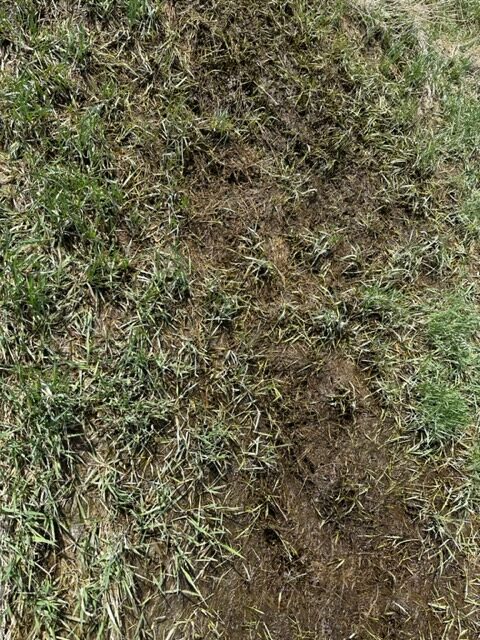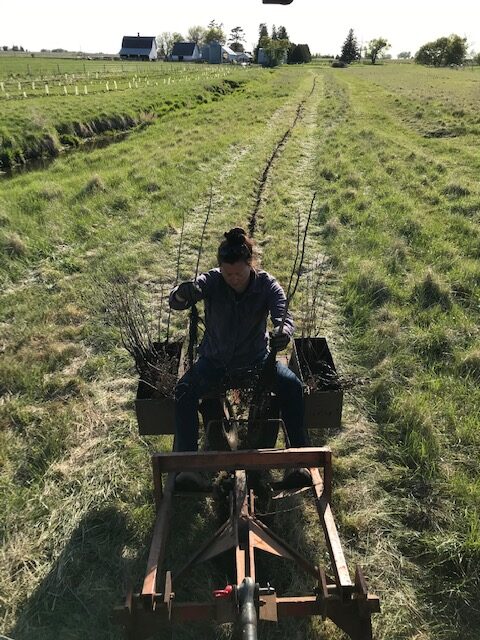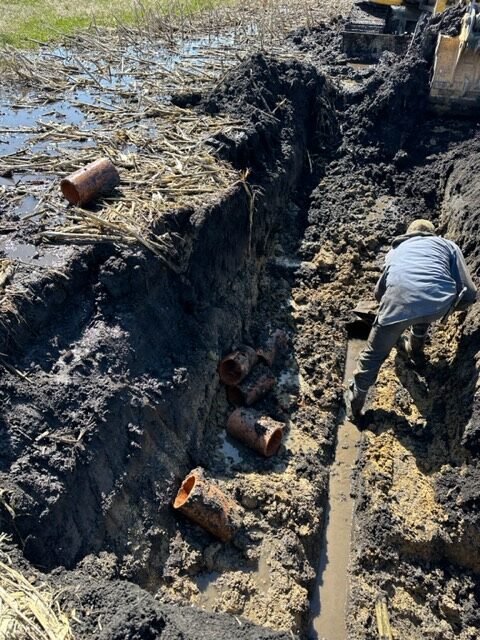Much of the Midwest’s Corn Belt is productive only because of an underground network of drainage tubes known as tile. That tiling made lucrative row cropping possible but produces water quality issues like excess nitrates and other environmental problems. As Wendy Johnson has discovered, the tiling system is a challenge for establishing silvopasture, one of the most climate-friendly solutions. Silvopasture integrates pasture with trees in a system for raising livestock. Here’s a recent report from Wendy:
As we have been thinking about tile and how perennial farmers and those who do both annual and perennial agriculture can live in “community” with tiling, these ever-present underwater aqueducts, I wanted to share these photos and videos, as we work with the realities on people’s land. 
In the last few weeks, I discovered that the area where I am going to plant a silvopasture was flooded with standing water, so much that when I was flagging it I wondered how I was going to plant trees through it (first picture). The riparian buffer also had some standing water, which is highly unusual because the water should flow down into the creek quite easily (second picture). We investigated and discovered that the 8” tile outlet was plugged with grass roots that had grown into it about a foot. An easy fix.

But it did make me ask myself: What will I do if these trees I plant plug the tile? Will I just let the water stay there and eventually kill the tree that is waterlogged? When tile is plugged, the water just bubbles to the surface continuously until it’s unplugged and everything behind the plug can flow out. In a drought situation, any tree roots will go to that water.
The last picture is a recent tile plug due to a raccoon that got stuck. Old clay tile is still very much intact, which I was very surprised of. My neighbor and I compared tile maps that were done in 1963 and 1969. Digging up soil at this level is heartbreaking but also helps me appreciate the soil even more: Its smell, rich black color and consistency are beautiful. Once we removed the raccoon body plug, you should have seen the water just gush through.

 If we want to spread perennial agriculture throughout the Midwest landscape, we must prepare to answer questions and concerns about tiling and trees. We need research done on how perennial systems with tile can be highly functional wins, which may require engineering and some technology, such as shutting off valves on how landowners can control water flow from their tile to use it to their advantage.
If we want to spread perennial agriculture throughout the Midwest landscape, we must prepare to answer questions and concerns about tiling and trees. We need research done on how perennial systems with tile can be highly functional wins, which may require engineering and some technology, such as shutting off valves on how landowners can control water flow from their tile to use it to their advantage.
I have these tile issues this spring (and every spring).